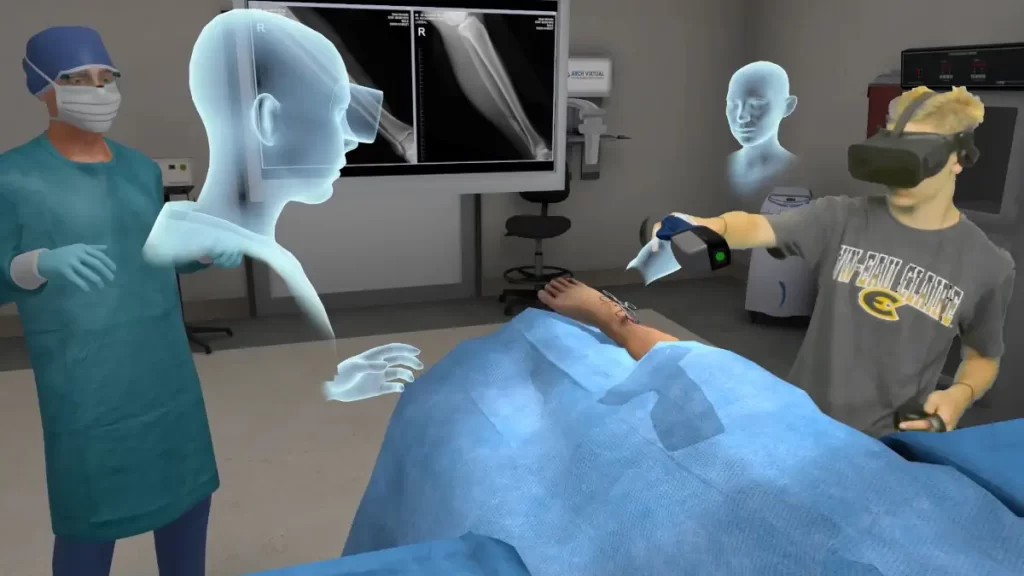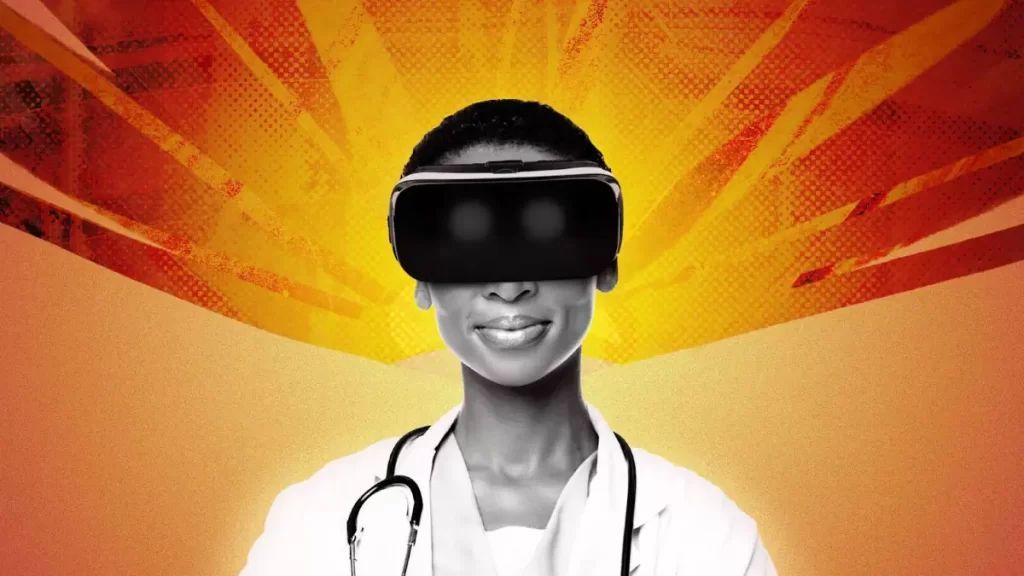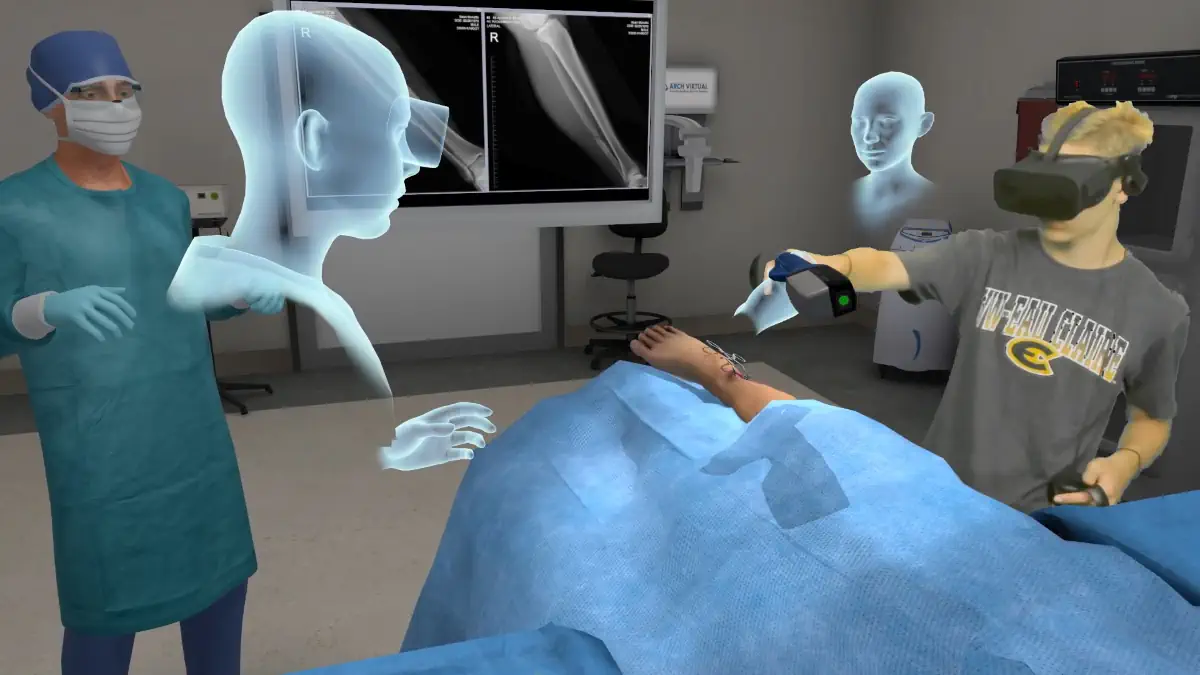According to health professionals, the Covid-19 pandemic age might benefit from the use of the metaverse, a combination of virtual and real-world space. An expansion of the metaverse’s experience is needed so that its users can realize the need for medical education. The prefix “meta,” which refers to the virtual world, plus the suffix “verse,” which refers to the physical world, make up the term metaverse.
It is a more sophisticated kind of virtual reality than what is already available (VR). Extended reality (XR), which includes virtual reality (VR), augmented reality (AR), and mixed reality (MR), is the metaverse’s primary technology (MR). At a symposium, medical specialists debated the virtues of the metaverse and its limits in medicine, and the role it plays in medical education.
Generating interaction with medical students
The most significant benefit of the metaverse is that it allows people to engage with one another while pursuing online practical medical courses, unlike the current one-way schooling. Healthcare will utilize it in medical education for simulation training rather than knowledge dissemination. For example, advanced hand skills and interactions need extra technology in metaverse-based medical training, which is more successful.
Surgery, for example, requires not just an understanding of the metaverse but also the use of instruments that need dexterous grasping abilities. This necessitates the use of appropriate hardware or tracking technologies. Metaverse technology has to be more flexible and adaptable on an individual basis.
Because metaverse programs are still in the experimental stage, it won’t be easy to validate them (determine if a system regularly generates outcomes that satisfy the predetermined criteria and record this). Instead of restricting access to the metaverse, it should be expanded.

Use of Virtual Reality in medical education more often
A growing number of physicians and professionals are using virtual reality to teach other doctors and medical staff. You may leverage virtual reality to imitate operations applied in the real world. It’s possible to see every interaction’s details on the desktop displays. IoT, DLT, 6G or even 10G networks, robots, bring-your-own-computer interfaces, AI, cloud, edge, and quantum computing will all be included in the development of VR, AR, and MR systems that will be used in medical diagnosis, treatment, and prevention.
Surgical operations are made possible by the use of augmented reality
As medical operations previously used, augmented reality is now being used in more complex surgeries. Whether removing dangerous tumors or conducting a complex spinal Surgery, surgeons always look for better methods to get the job done. While robot-aided operations were already in use to undertake complex procedures with accuracy and flexibility, the employment of robotics was a relatively recent development.
Quality of life, health, and well-being
It is possible to achieve new approaches to link healthcare practitioners and patients via gaming concepts in non-game situations. Currently, the application of AR in healthcare is limited to wellness and fitness apps, such as the usage of virtual teachers to give better exercises. Virtual reality has also improved the quality of life of patients with dementia.
VR headsets were used to ‘visit one of five virtual landscapes,’ including a church and the sands of a beach, in a research paper published in 2013. Study participants could recall previous memories more quickly after 16 supervised sessions, which increased their mood and mental stimulation.
Bridge-building between nursing school and real-life patient care
It is the responsibility of instructors to provide high-quality information that they may use in virtual programs to simulate on-site nursing abilities. Teaching students when their jobs have been terminated has been difficult for nursing schools. Learners should feel as though ‘there was no difference in clinical treatment after performing this in the metaverse setting’ in a clinical field experience program. It is a massive addition to healthcare and is set to make patient care better, especially in the long run.
Interoperability is a fundamental part
With interoperability and openness being at the forefront of healthcare’s next wave of innovation, the metaverse is not complete until the assets and data that make up these metaverses are simple to transfer across platforms and networks. The metaverse has several different asset types: avatars, 3D models, mixed reality, and spatial settings all work together to generate content packages. Data and communication standards will grow with the industry, facilitating cross-metaverse collaboration.

Virtual reality and augmented reality are already making a difference in patients’ lives. In even the most basic operations, such as intravenous injections and blood draws, new technology like Accuvein’s skin-projected vein map may improve outcomes.
Optimus Mixed Reality, which uses the Microsoft HoloLens to blend the real and virtual worlds, was recently unveiled by Zimmer Biomet and Medtronic after the latter bought Digital Surgery. As these vast MedTech businesses and a rising number of startups creating AR and VR solutions demonstrate, the surgical environment will likely undergo significant change soon.
It is also worth noting Veyond Metaverse, which brings together healthcare specialists from all around the world to collaborate on medical operations. Cloud-based and real-time communication technologies allow professionals to practice their skills with the highest accuracy to guarantee that everyone gets the most satisfactory healthcare service at any time and in any location.
It’s too early to tell whether this will lead to healthcare being a part of the metaverse. But anybody who has utilized a digital avatar at a virtual meeting or event has already gotten a taste of what the future may contain. And we are already witnessing the development of healthcare-specific metaverse systems.
The metaverse has immense promise for healthcare innovation and improvement in its infancy. Watching the implementation evolve will be intriguing. Having a place where people can face reality without necessarily experiencing the reality is pretty fascinating. It is probably one of the reasons why the metaverse has been identified as one of the best innovations in the healthcare industry over the last couple of years.
While the metaverse is pretty promising, it is still a new field and has its shortcomings. Its complications will only require new solutions over the next couple of years.
- Tree Facts: 42 amazing things about trees - February 8, 2022
- Importance of Microbial Contamination Analysis of Fresh Produce - December 16, 2021
- 7 Reasons Why Dinosaurs Continue Fascinating Humans - December 11, 2021
